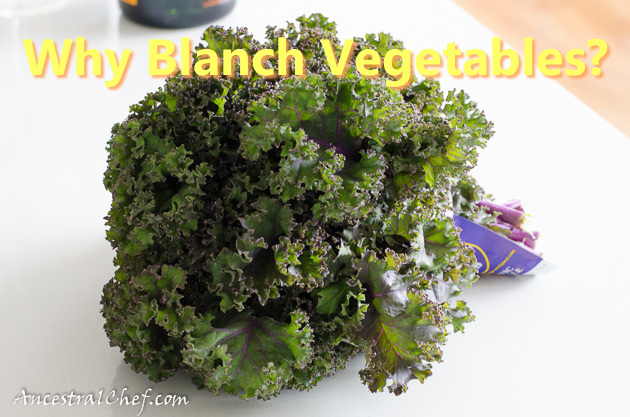Why Blanch Vegetables?

Has it ever seemed silly to you to blanch (i.e., drop into boiling water for a very short time) vegetables before cooking them or freezing them? Well, there’s actually a purpose to doing this as I’ll explain!
This article will detail:
- What is blanching?
- Why would you want to blanch vegetables?
- How do you blanch vegetables?
- How long should you blanch vegetables for?
What is blanching?
It’s a cooking method that involves dropping a vegetable or fruit into boiling hot water for a very short time (usually a few minutes). Generally, the vegetable should then be plunged into cold or ice water to stop it from continuing to cook.
Why would you want to blanch vegetables?
There’s a few reasons actually:
- Removes Bitterness: Blanching will denature (or destroy) certain enzymes in vegetables that make them bitter. For example, kale should be blanched in many instances or else it’ll have a bitter taste.
- Brighter Colors: Many green vegetables turn a brighter green color when blanched. This makes them more appetizing, e.g., in salads.
- Sanitizes:: The heat kills some surface bacteria and removes some of the dirt from the vegetables. This is especially useful if you’re planning to freeze the vegetables for later use as then it’ll retain its freshness for longer.
- Keep Flavors Fresh and Seals in Vitamins: This is mostly due to the enzymes that are destroyed by the heat. Again, it’s great if you’re planning to freeze those vegetables.
- Shortens Cooking Time: You’re basically partially cooking the vegetables, so they won’t need to be cooked for as long later.
How do you blanch vegetables?
The blanching process has to be very exact in order to properly destroy the enzymes (so that the vegetables won’t be bitter and will retain more vitamins). Unfortunately, the blanching process also varies a little depending on which vegetable you’re working with.
There are a few different ways to blanch vegetables: 1) with boiling water, 2) with steam, or 3) with a microwave (although this does not work as well as the first two methods). Blanching with boiling water is probably the easiest by far, so we’ll go with that method.
The basic technique of blanching with boiling water is this:
- Boil a large pot of water.
- Drop the vegetables into the boiling water.
- Use a timer to make sure you take the vegetables out after the blanching time. The blanching time will vary depending on whether you’re blanching the vegetable to freeze it or if you’re blanching it for other purposes – it needs to be more exact if you’re planning to freeze it (more on this below). Use a large strainer to remove the vegetables quickly.
- Plunge the vegetables immediate into cold or ice water.
How long should you blanch vegetables for?
As I said above, the blanching time varies depending on what your purpose is.
If you’re looking to freeze the vegetables, then check out the bottom of this webpage for blanching times.
If you’re just looking to speed up the cooking process or remove the bitterness, then a few minutes should be sufficient for most vegetables.


